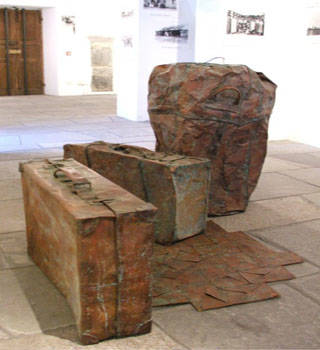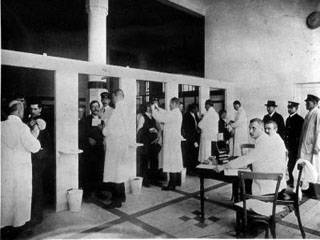Honoring Italian emigrations after 150 years
Our Portuguese-speaking friend, who is half Italian and half English, was at the barber’s in Rome when he heard the young man in the next chair speaking only Portuguese. Our friend offered to translate, and, as the two chatted, the man having his hair cut mentioned that he was of Italian descent, but spoke no Italian. "In 1940 my grandfather got scared and left Italy for Brazil,” he explained. “I grew up there. I never learned Italian, and my father is dead. So now I’ve come to Rome to learn to speak Italian and to trace my grandparents and their ancestors.”
All told, an estimated 29 million Italians emigrated, whose descendants include some 25 million present day Brazilians, meaning that between 13% and 14% of that population claim an Italian heritage. Italian emigration to the U.S. was fairly limited until 1870 and unification of Italy, but by 1900 the figure had risen to over 400,000, and in the decade after 1900 over 2,100,000 arrived. Today nearly 18 million Americans can claim Italian descent, or about 6% of the U.S. population. By 1910 New York City alone was already home to 472,000 Italians.
He is not alone in wanting to trace those roots. Genealogical research has become a passion among Italians as well as the scattered descendants of Italians. Helping in the research for family histories is an array of on-line genealogical tools and organizations like the Italian Genealogical Group, which is active in New York City, see: http://www.italiangen.org/
Among the most helpful is the Genoa-based Centro Internazionale di Studi Emigrazione Italiana (CISEI, see:www.ciseionline.it/), which announced Sept. 9 that by year end its archives regarding the two million Italians who emigrated from that port city will be available on line for free public use, thanks to the sponsorship of the Compagnia di San Paolo. The announcement was made at Turin’s Museo Diffuso della Resistenza. The State Archives of Genoa has 12,038 nautical journals of ships which traveled out of the port between 1883 and 1956--part of a precious collection of documents that include passenger lists, now being catalogued.
Genoa was a particularly important port of departure. From the second half of the 19th century onwards Genoa was the port of departure for 61% of those leaving their country. In an interview with the daily Corriere della Sera, the CISEI president Fabio Capocaccia between 1876 and 1901 almost two million Italians fled from their country. Thereafter the pace quickened, to the point that 1.7 million left Italy between 1902 and 1925. Under Fascism emigration continued, but at a slower pace, with only 400,000 leaving between 1926 and 1939. CISEI also plans to open a museum in Genoa within the year.
Turin has a fairly new emigration museum, open since 2006 at Forssasco. And Rome’s fascinating National Museum of Emigration, located on the ground floor of the Vittorio Emanuele monument at Piazza Venezia, was inaugurated in 2009, in time to honor the 150 years of Italian unification. At that launch President Giorgio Napolitano said, “It is a heritage of sympathy, esteem and friendship which benefits Italy in the whole world. It is fruit also and above all of what those emigrants created when they went to the countries which offered them hospitality.”
Besides what is on view at present, the Rome museum has an attic stuffed with donations from patrons, and so its displays of photographs, documents (letters, permits, passports) and such artifacts as cardboard suitcases are expected to change every six months. An hour-long documentary film showing scenes of emigration by ten Italian directors is also on view in the museum. At the end of this year the present exhibition will go on tour outside Italy, and, afterward, throughout Italy, which already has 54 regional exhibitions on emigration. In the words of Lorenzo Prencipe, president of the Emigration Study Center in Rome, “ Without a history of the phenomenon of emigration Italian history is inaccurate and incomplete.”
The museum has three sections: the birth and development of Italian emigration; the regional geography of emigration; and its cultural reflections in cinema, literature, music, objects and rare documents. For a short video of its inauguration, see: http://www.dailymotion.com/video/xaxy0l_museo-nazionale-dell-emigrazione-l_creation
To read more, log onto www.clevelandmemory.org/italians/partii.html, which points out the irony that the first Italians to come to the New World were the captains of the ships of discovery. And to see an interesting film with music about emigration between 1892 and 1924, see the short films on YouTube by Marcello Bonitatibus, president of the cultural association Pietro de Stephanis, at Pettorano sul Gizio. The video was made for the conference Emigartion and Immigration, Songs and Music., held in August of 2007.









































i-Italy
Facebook
Google+
This work may not be reproduced, in whole or in part, without prior written permission.
Questo lavoro non può essere riprodotto, in tutto o in parte, senza permesso scritto.